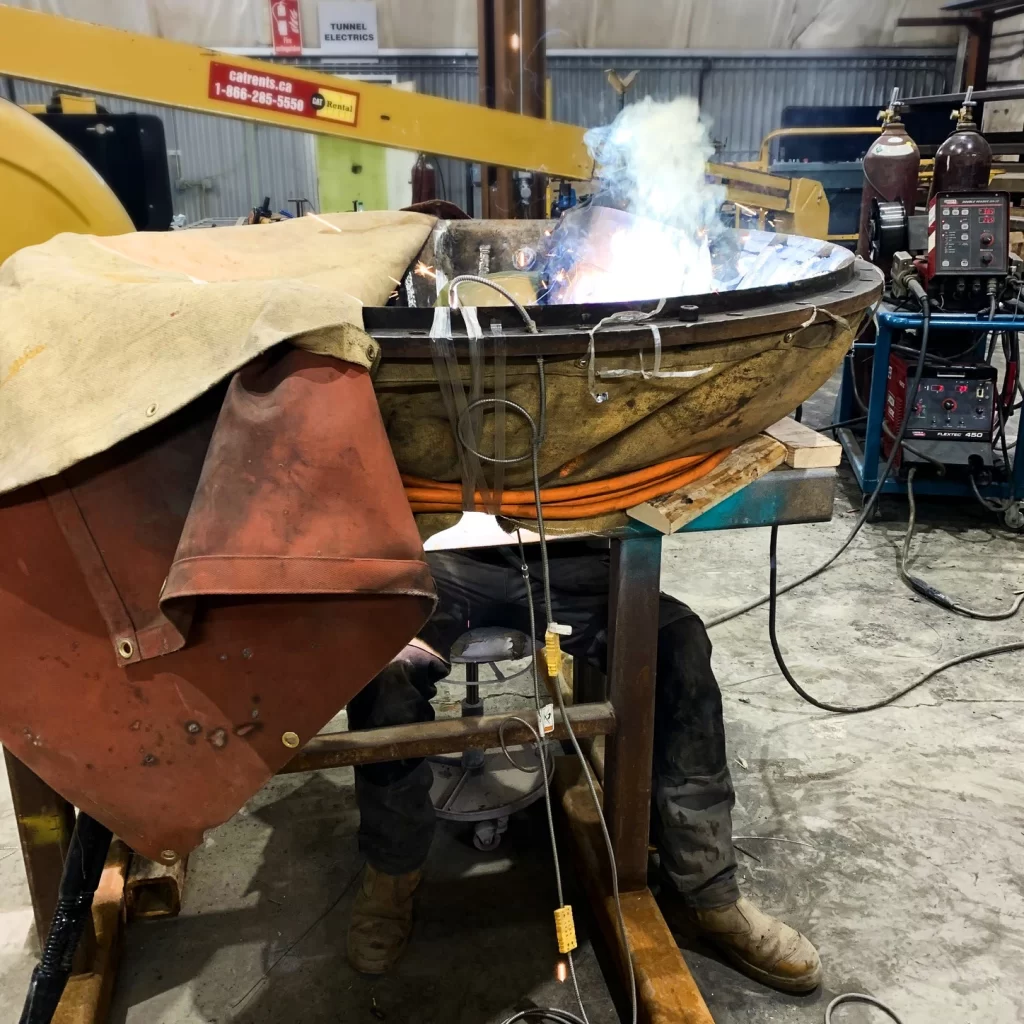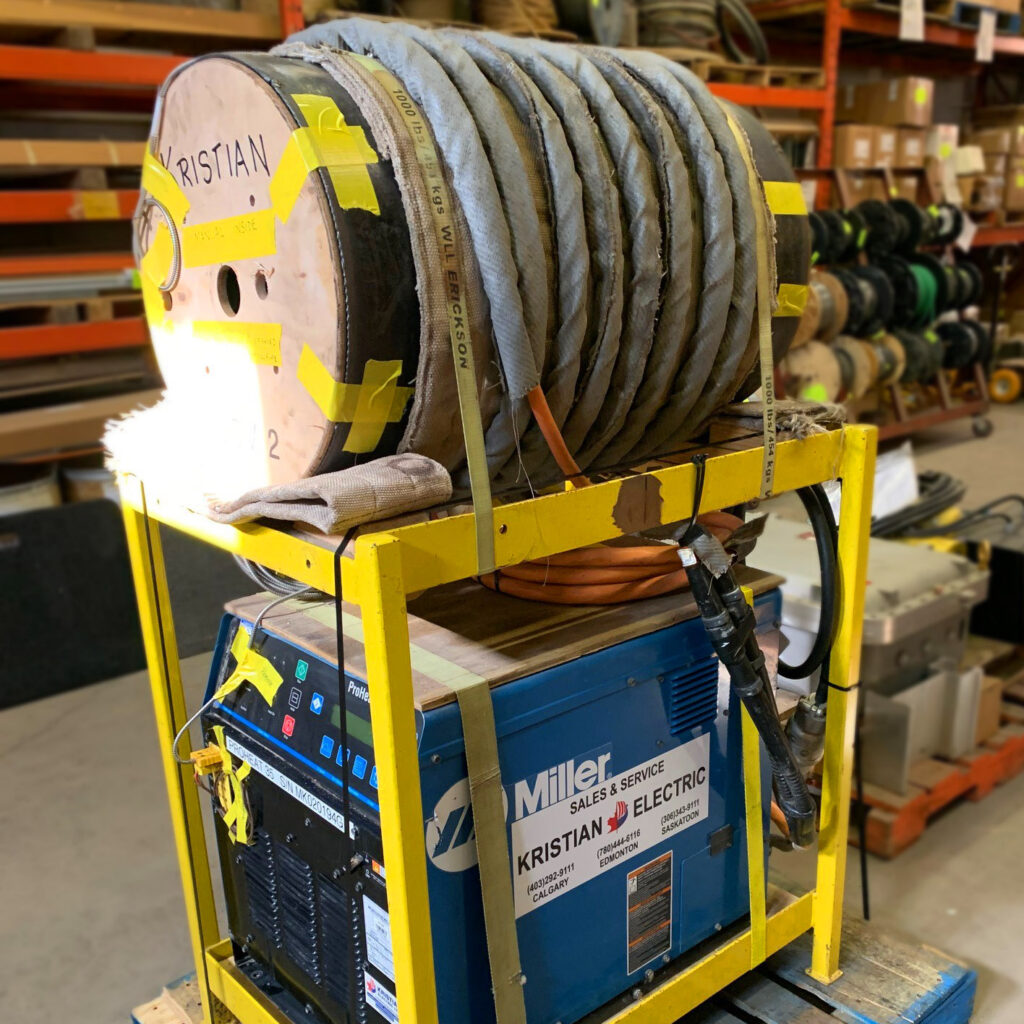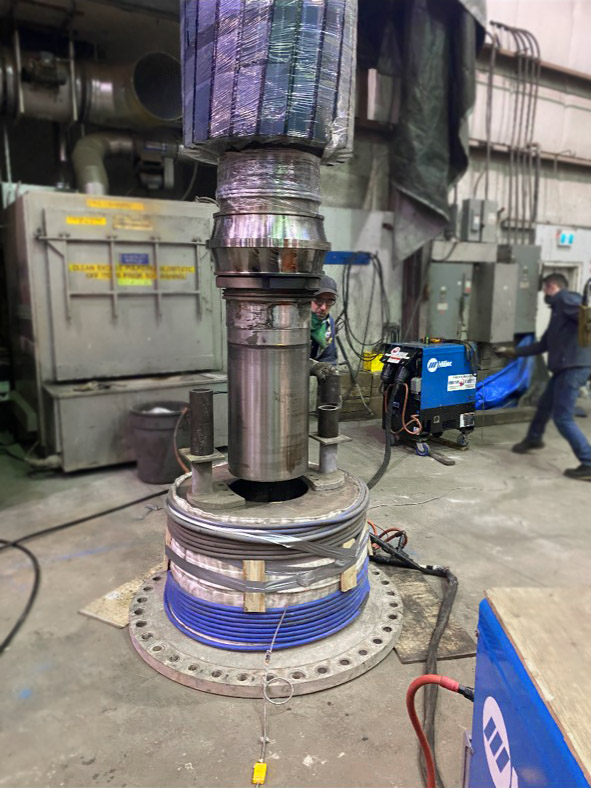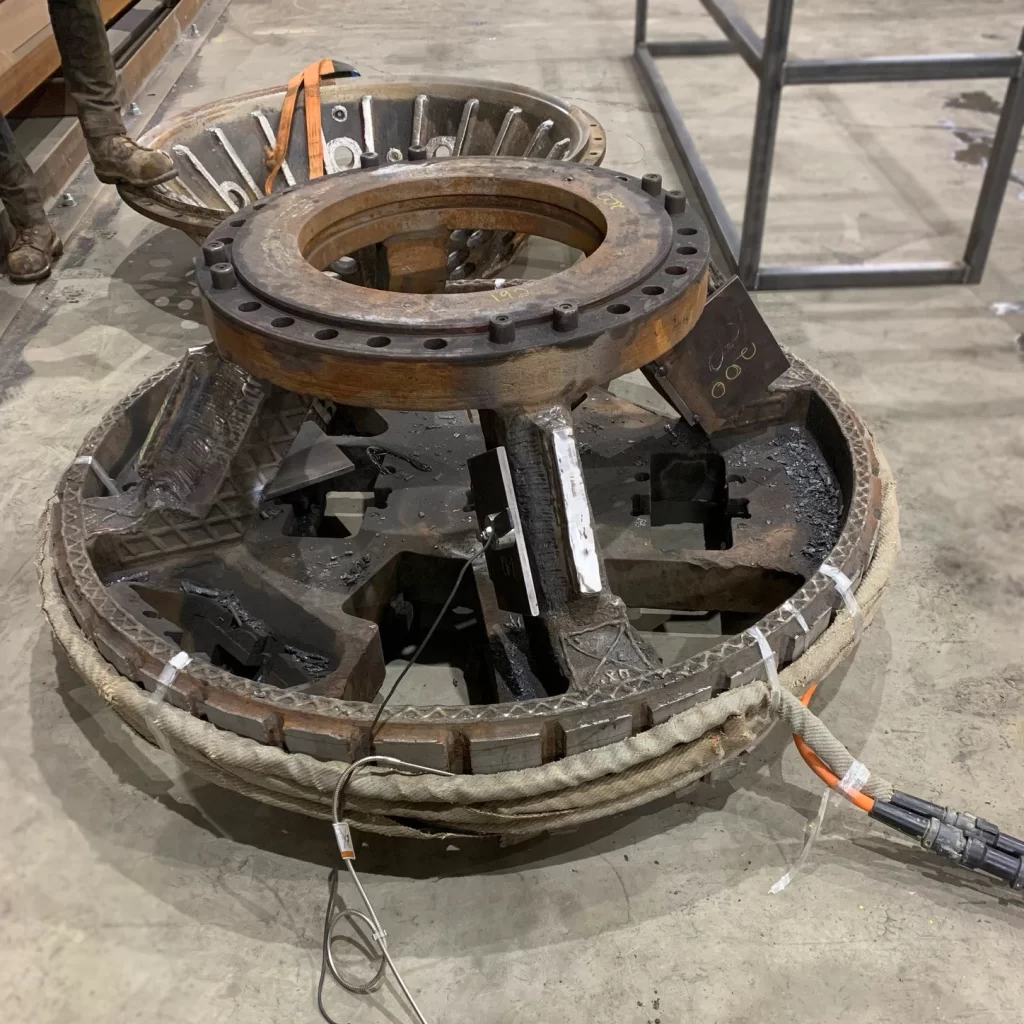The Miller Proheat Induction Heating system utilizes inverter technology, similar to their welding equipment, to convert alternating 60hertz per second to kilohertz per second. This high-frequency alternating current, applied to ferrous metal, creates localized electrical currents called “eddy currents”. The circulating eddy currents flow against the metal’s resistance, thus heating the metal from the inside out.
Since the introduction of the Miller ProHeat induction system in the mid-2000s, induction heating has become a go-to choice in the industry to improve productivity. Applications that would typically require hours to heat can be done in minutes with the Proheat system.
Here are four industrial applications that will benefit greatly from the use of induction heating.
1. Preheat and Post-Heat of Welds
Welding preheat is done to reduce issues such as cracking and stress corrosion and to aid the parent and welding material in blending. Heating the area around a welding joint to a temperature under 350°F vastly reduces the cooling rate of the weld and moisture.

Post weld heating is done for similar purposes as preheating, however, at much higher temperatures (1150°F-1300°F) This returns the grain structure of the parent material and welded material to a normalized state.
Both post and pre-heat have traditionally been achieved with open flame, resistance heating, and convection ovens. However, these processes tend to cause inconsistent temperatures, untimely results, and require cumbersome labour. Induction heating allows for quick set-up (only minutes) and results between 4 to 12 hours, including ramp up and cool downtime. Along with steady and even heat disbursement, an induction system can be customized to the work itself, with the flexibility to heat many different sizes and shapes of metal.
2. Hydrogen Bake-Out
When the welding process is complete, residual stresses in the material can be left behind. Hydrogen cracking, (also known as delayed cracking, cold cracking, hydrogen-assisted cracking, hydrogen-induced cracking, and hydrogen embrittlement to name a few), can occur in a weld immediately or up to 72 hours after welding is completed. This is caused by atomic hydrogen dissolving into the steel. If there is enough concentration of these hydrogen atoms, the stress will reduce the metals threshold and cracks may begin to spread.
Hydrogen bake-out is achieved by elevating the material temperature to allow the hydrogen to diffuse out of the metal. This process is commonly attempted with open flame, which can be quite inconsistent and unsafe. One of the biggest issues with flame, especially when utilized in more northern climates, is that its biggest by-product is water vapour. This vapour can contribute greatly to the hydrogen build-up in the steel itself, making it a somewhat futile effort. With the Proheat induction method, there is no flame. The metal is uniformly heated from the outside to the specific, predetermined temperature and held there for as long as required.

3. Coating Removal
Occasionally, steel pipes and metal structures need to have their outer protective coatings removed. This is commonly done to allow for servicing, repairs, and maintenance of the metal beneath.
Though traditionally achieved with the use of a torch, or blasting with sand or walnuts, these processes tend to be hazardous, time-consuming, and make for difficult cleanup.
Induction generates heat within the coated metal, not to the coating itself, this allows for quick debonding of the coating from the steel substrate up to 90 percent faster than alternative methods. This process can remove coatings such as epoxies, urethanes, lead paint, fire-retardant coatings as well as glued, vulcanized, and chlorinated rubbers. Rather than being pulverized, the coating peels easily off, allowing for easy clean-up of debris.

4. Shrink fit Application or Removal by expansion
Thermal expansion is the tendency of matter to alter its shape, volume, and density in response to a change in temperature. This principle is put into practice to expand and shrink metal objects to create a fastening between two tight-fitting parts, also known as an interference fit.
Some alternatives rely on force to achieve a tight fit, however, by applying heat, the housing can expand just enough to allow for easy removal or insertion of the part with minimal force. Infrared heat and torches are commonly used to achieve this result, though these can affect the surrounding material and workspace. Induction heat is localized only to the part to be altered, making the work environment safer and more comfortable.
Click here to learn more about induction heating.


